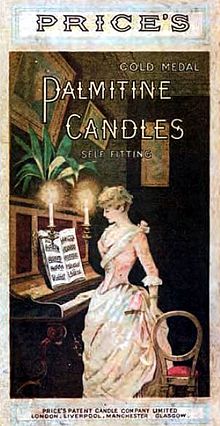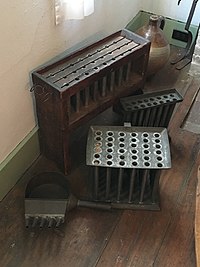Fashionable period
With the expansion of the whaling industry within the 18th century, spermaceti, an oil that comes from a cavity within the head of the sperm whale, grew to become a extensively used substance for candle making. The spermaceti was obtained by crystallizing the oil from the sperm whale and was the primary candle substance to change into accessible in mass portions. Like beeswax, spermaceti wax didn't create a repugnant odor when burned, and produced a considerably brighter gentle. It was additionally more durable than both tallow or beeswax, so it might not soften or bend in the summertime warmth. The primary "customary candles" have been created from spermaceti wax.
By 1800, an excellent cheaper various was found. Colza oil, derived from Brassica campestris, and an identical oil derived from rapeseed, yielded candles that produce clear, smokeless flames. The French chemists Michel Eugène Chevreul (1786?1889) and Joseph-Louis Gay-Lussac (1778?1850) patented stearin in 1825. Like tallow, this was derived from animals, however had no glycerine content material.
Industrialization
The manufacture of candles grew to become an industrialized mass market within the mid 19th century. In 1834, Joseph Morgan, a pewterer from Manchester, England, patented a machine that revolutionised candle making. It allowed for steady manufacturing of molded candles through the use of a cylinder with a moveable piston to eject candles as they solidified. This extra environment friendly mechanized manufacturing produced about 1,500 candles per hour, (based on his patent ". . with three males and 5 boys [the machine] will manufacture two tons of candle in twelve hours"). This allowed candles to change into an simply inexpensive commodity for the lots.

Presently, candlemakers additionally started to vogue wicks out of tightly braided (somewhat than merely twisted) strands of cotton. This system makes wicks curl over as they burn, sustaining the peak of the wick and subsequently the flame. As a result of a lot of the surplus wick is incinerated, these are known as "self-trimming" or "self-consuming" wicks.
Within the mid-1850s, James Young succeeded in distilling paraffin wax from coal and oil shales at Bathgate in West Lothian and developed a commercially viable technique of manufacturing. The Paraffin wax was processed by distilling residue left after crude petroleum was refined.
Paraffin could possibly be used to make cheap candles of top of the range. It was a bluish-white wax, burned cleanly, and left no disagreeable odor, in contrast to tallow candles. A disadvantage to the substance was that early coal- and petroleum-derived paraffin waxes had a really low melting level. The introduction of stearin, found by Michel Eugène Chevreul, solved this drawback. Stearin is tough and sturdy, with a handy melting vary of 54?72.5 °C (129.2?162.5 °F). By the top of the 19th century, most candles being manufactured consisted of paraffin and stearic acid.
By the late 19th century, Price's Candles, primarily based in London was the biggest candle producer on the earth. The corporate traced its origins again to 1829, when William Wilson invested in 1,000 acres (four km²) of coconut plantation in Sri Lanka. His purpose was to make candles from coconut oil. Later he tried palm oil from palm bushes. An unintended discovery swept all his ambitions apart when his son George Wilson, a gifted chemist, distilled the primary petroleum oil in 1854. George additionally pioneered the implementation of the strategy of steam distillation, and was thus capable of manufacture candles from a variety of uncooked supplies, together with pores and skin fats, bone fats, fish oil and industrial greases.
In America, Syracuse, New York developed into a world heart for candle manufacturing from the mid-nineteenth century. Producers included Will & Baumer, Mack Miller, Muench Kruezer, and Cathedral Candle Company.
Decline of the candle business
Regardless of advances in candle making, the candle business declined quickly upon the introduction of superior strategies of lighting, together with kerosene and lamps and the 1879 invention of the incandescent light bulb.
From this level on, candles got here to be marketed as extra of an ornamental merchandise. Candles grew to become accessible in a broad array of sizes, shapes and colours, and shopper curiosity in scented candles started to develop. Throughout the 1990s, new forms of candle waxes have been being developed on account of an unusually excessive demand for candles. Paraffin, a by-product of oil, was rapidly changed by new waxes and wax blends on account of rising prices.
Candle producers checked out waxes corresponding to soy, palm and flax-seed oil, usually mixing them with paraffin in hopes of getting the efficiency of paraffin with the worth advantages of the opposite waxes. The creation of distinctive wax blends, now requiring completely different perfume chemistries and masses, positioned stress for innovation on the candle wick manufacturing business to fulfill efficiency wants with the usually more durable to burn formulations.








